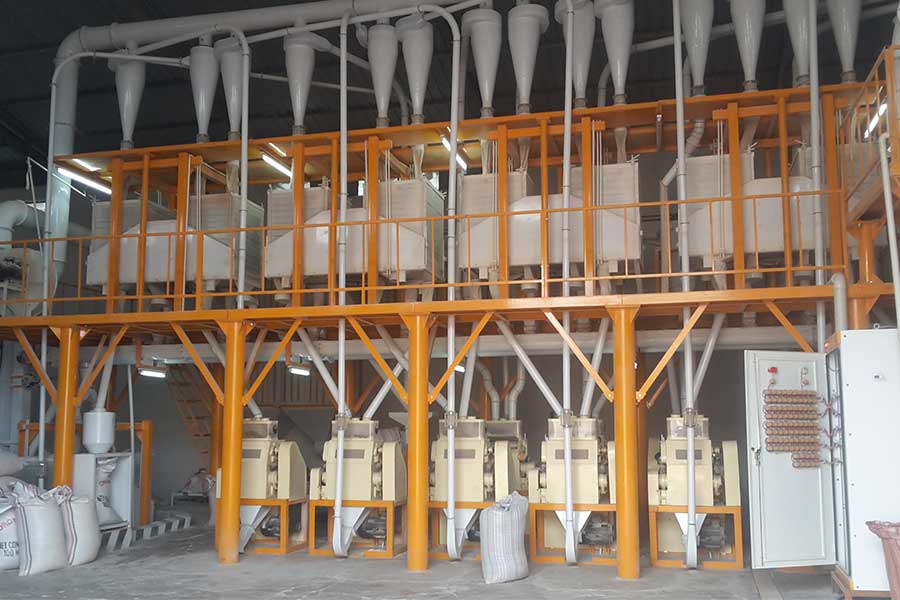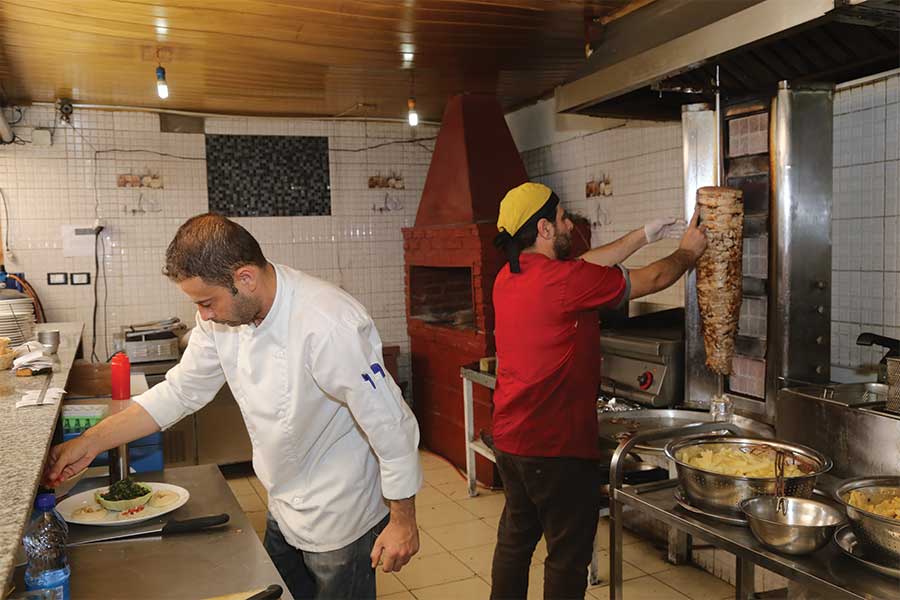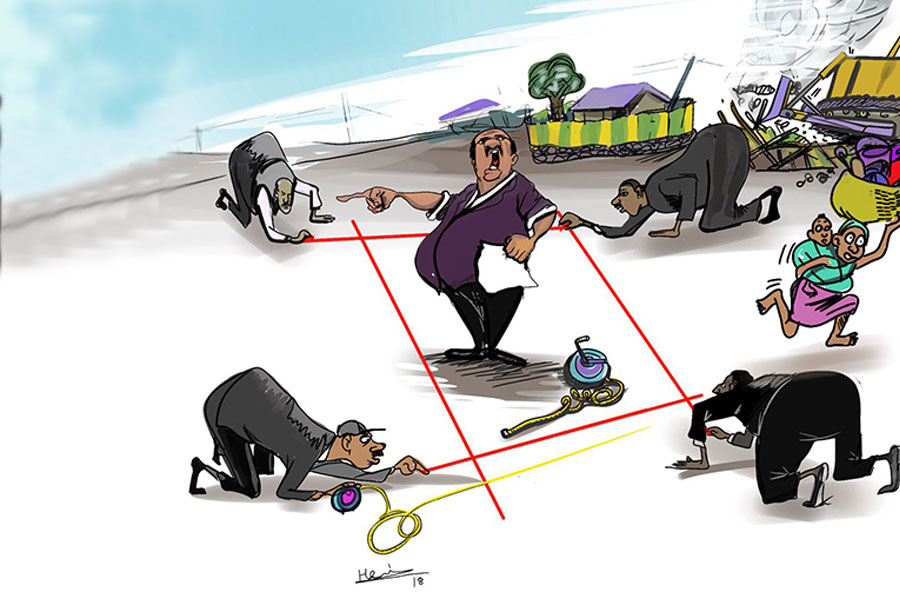
May 16 , 2020
By
As a region prone to food insecurity and recurrent droughts, the COVID-19 pandemic brings with it an unprecedented challenge to the food and nutrition security of many smallholder farmers and population groups dependant on daily labour and movement for livelihood and income, writes Chimimba David Phiri (PhD), policy economist and FAO subregional coordinator for Eastern Africa and representative to the African Union and UNECA.
The Novel Coronavirus (COVID-19) pandemic has turned into a global crisis overwhelming health systems, devastating economies, and claiming over a quarter of a million lives worldwide within a few months. In Africa, the number of confirmed cases has risen to nearly 70,000, causing 2,369 deaths as of May 12, 2020.
The increasing number of confirmed cases in Africa is of grave concern considering that the continent has fragile health systems and a high prevalence of HIV, TB and malnutrition. Malnutrition could weaken the immune response in vulnerable populations, especially the elderly and those with chronic health conditions, contributing to the threat of COVID-19 related complications and deaths.
The Eastern Africa subregion is no exception in observing growing trends of COVID-19 cases with a total of 3,772 positive confirmed cases and 94 deaths registered, as of May 12, 2020, in nine countries (Ethiopia, Kenya, Uganda, Rwanda, South Sudan, Somalia, Burundi and Eritrea). In response, governments are taking serious measures including enforcement of some degree of lockdown, limitations on public gatherings, and the closing of restaurants and bars, shops and non-essential businesses. In most countries schools have largely been closed and citizens required, or strongly encouraged, to stay home to avoid catching or spreading the virus.
Looking at the countries in the region, one can see that serious measures are being taken. For example, Ethiopia has declared a state of emergency. While refraining from imposing a total lockdown, it has placed limitations on movements to and from regional towns and put in place a remote work system that allows the government to keep working. Similarly, Uganda has declared a nationwide shutdown as part of its effort to contain COVID-19. Rwanda extended its lockdown, while Eritrea has imposed a 21-day national lockdown. The same applies to Kenya, which has extended a nationwide partial lockdown and nighttime curfew for 21 days, during which people will not be able to enter or exit the capital Nairobi or some coastal areas.
As a subregion prone to food insecurity and recurrent droughts, the COVID-19 pandemic brings with it difficult challenges to the food and nutrition security of many smallholder farmers, and population groups dependant on daily labour and movement for their livelihood and income. Many urban dwellers in the region live in crowded conditions or work in the informal sector, mainly in local and urban markets and as street vendors - and depend on it for food; lockdowns and social distancing measures could pose major problems both for consumers and workers.
The closure of schools means the disruption or shutdown of school meal programmes that are often the main source of regular meals available for vulnerable and at-risk children. It will also affect children with a very limited home diet who due to the emergency will be more vulnerable with a lack of nutritious food.
As part of measures to curb the spread of the virus, agriculture markets risk closure. This can reduce farmers' ability to sell food and thus have a stable livelihood, as well as reduce the ability of consumers to access fresh produce such as fruits and vegetables. Perishable items may not make it to market or consumers because of transportation restrictions. Difficulty in bringing food to the market means fewer items to buy, sell and trade. Market closure due to illness and quarantine are also bottlenecks to the supply chain. Furthermore, road closures can slow down agricultural services, limit access to inputs, halt delivery of goods, and restrict marketing, leading to a loss of income and loss or accumulation of produce at farms. To avoid these drawbacks to the food supply chains, countries and key actors must strive to keep both the domestic food markets as well as global food trade going.
Furthermore, lack of information on market conditions (production, stocks, consumption, trade and prices) and uncoordinated policy interventions by countries, similar to the episode of the 2007-08 global food price crisis, is also a significant threat. Although disruptions in the food supply chain are minimal thus far, challenges have been experienced in terms of logistics, including food movement vis-à-vis movement restrictions and quarantine measures.
The current situation in Eastern Africa is exacerbated by the ongoing desert locust outbreak. In fact, hopper bands and new swarms of desert locusts are currently forming in northern and central Kenya, southern Ethiopia and Somalia.
With the onset of the rainy season in the larger part of Eastern Africa, the locusts will breed even faster than before. And yet COVID-19 is hampering efforts to curb the effects of the locust by straining the supply chains that assure the delivery of pesticides.
What can be done to reduce the likely impacts of COVID-19 on food and nutrition security?
To mitigate the possible devastation to livelihoods, countries need to put in place robust policies and strategies to support agricultural production and maintain critical supply chains, while ensuring the immediate food needs of vulnerable populations are met. A first step is to put in place lifesaving social protection schemes to protect the most vulnerable people; adjusting and expanding social protection programmes; maintaining essential and lifesaving nutrition services; and adjusting school meal programmes to continue delivering school meals even when schools are closed (Ethiopia has taken this step).
Given that the majority of the population in the region derive their livelihood from the agricultural sector, countries need to ensure that farmers have access to agricultural inputs such as seeds and fertiliser; that livestock keepers have access to animal feed and medicine; and that fish farmers have access to aquaculture inputs. Supporting the approaching production season is essential to avoid disruption of food supplies while protecting farmers and workers from COVID-19. This also requires keeping trade among countries open. To minimise the negative impact of the pandemic, governments should allow agriculture activities to continue running as an essential business.
Another critical step is to strengthen policy advocacy efforts to alert governments on the impact of the protection measures on food and nutrition security. A lot can be learned from past experiences. In this regard, one crucial action is making use of existing tools that effectively record and analyse policy decisions and make policy information available to the public.
The food and agriculture policy decision analysis tool of the Food & Agriculture Organisation (FAO) [of which the author of this article is a regional coordinator] was critical to responding to the 2007-2008 food crisis.
Using the tool, FAO continues to collect, register, classify and analyse policy information. The 2007-08 global food price crisis triggered a wave of export restrictions by some countries, while others started importing food aggressively. This contributed to excessive price volatility, which was damaging for low-income, food-deficit countries.
In the midst of a food crisis, data collection and data sharing are essential to anticipate supply shocks and identify possible risks that may threaten food systems.
Lessons learnt from the 2007-2008 crisis can also inform policy and legislative measures related to strategic grain reserves and food banks to strengthen the region's institutional capacity to respond to the effects of an emergency outbreak on the food supply chain.
The final key recommendation is to develop instruments for countries to access resources from relevant multilateral financial institutions. This entails identifying key funding institutions to ensure funds for agricultural production, maintaining food reserves, and keeping the food supply chain going to supplement the budget that is being spent on fighting the pandemic instead of development.
Countries with existing humanitarian crises, such as those in the Horn of Africa, are particularly exposed to the effects of the COVID-19 pandemic. It is critical that donor countries ensure continued delivery of humanitarian and development assistance where food insecurity is already high. Finally, regional and cross-country cooperation should be strengthened to find lasting solutions to the pandemic’s effect on livelihoods. All actors need to act now before the pandemic and other food security threats expose millions to hunger and malnutrition in East Africa.
PUBLISHED ON
May 16,2020 [ VOL
21 , NO
1046]

Fortune News | May 23,2020

Radar | Jul 25,2020

Viewpoints | Sep 19,2020

Advertorials | Jul 03,2019

Radar | Dec 07,2019

Featured | Nov 30,2019

Featured | Sep 10,2021

Commentaries | Mar 16,2019

Exclusive Interviews | Jun 24,2023


Photo Gallery | 171483 Views | May 06,2019

Photo Gallery | 161727 Views | Apr 26,2019

Photo Gallery | 151455 Views | Oct 06,2021

My Opinion | 136296 Views | Aug 14,2021





Dec 22 , 2024 . By TIZITA SHEWAFERAW
Charged with transforming colossal state-owned enterprises into modern and competitiv...

Aug 18 , 2024 . By AKSAH ITALO
Although predictable Yonas Zerihun's job in the ride-hailing service is not immune to...

Jul 28 , 2024 . By TIZITA SHEWAFERAW
Unhabitual, perhaps too many, Samuel Gebreyohannes, 38, used to occasionally enjoy a couple of beers at breakfast. However, he recently swit...

Jul 13 , 2024 . By AKSAH ITALO
Investors who rely on tractors, trucks, and field vehicles for commuting, transporting commodities, and f...

Oct 4 , 2025
Eyob Tekalegn (PhD) had been in the Governor's chair for only weeks when, on Septembe...

Sep 27 , 2025
Four years into an experiment with “shock therapy” in education, the national moo...

Sep 20 , 2025
Getachew Reda's return to the national stage was always going to stir attention. Once...

Sep 13 , 2025
At its launch in Nairobi two years ago, the Africa Climate Summit was billed as the f...

Oct 5 , 2025 . By NAHOM AYELE
In Meqelle, a name long associated with industrial grit and regional pride is undergo...

Oct 5 , 2025 . By BEZAWIT HULUAGER
The federal government is set to roll out a new "motor vehicle circulation tax" in th...

Oct 5 , 2025 . By NAHOM AYELE
The Bank of Abyssinia is wrestling with the loss of a prime plot of land once leased...

Oct 5 , 2025 . By BEZAWIT HULUAGER
The Customs Commission has introduced new tariffs on a wide range of imported goods i...